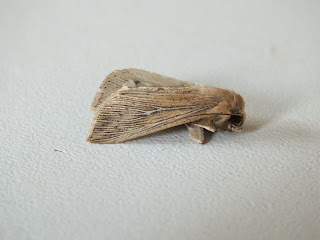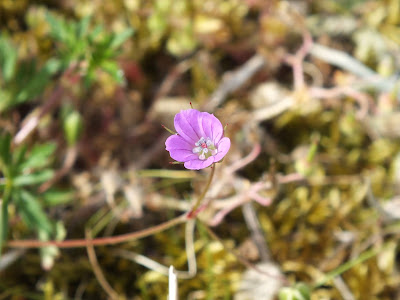When recording the presence of wildlife at a location there are times when the first evidence comes from finding the corpse of an individual. So it was this weekend when Our Campsite Warden asked me to identify a dead mammal that a visitor had reported to her.
When I was presented with what was clearly a full poo bag I did check my qualifications, forensic science is not amongst them... in fact what was inside was a rather splendid, but sadly deceased male POLECAT.
Now here we need to consider the possibility that it was a domesticated ferret-polecat but immediately it was obvious by its size, condition and pelage that we had the real thing. The presence of Polecats has long been suspected with odd reports from the nature reserve and from the forest. I took the relevent measurements, tail, hindfoot, nose to body etc and all fitted in the range for a male Polecat in the welsh population.
 |
| Formidable claws |
 |
A sad sight but useful information gained,
the wind was blowing the fur around revealing the underfur
|
---------------------------------
The Vincent Wildlife Trust say this about the status of the Polecat;
The polecat (Mustela putorius) is of considerable conservation significance in Britain.
This is particularly so because of its current recolonisation of many areas of lowland Britain from which it was trapped to extinction at the end of the 19th century.
Today, polecats have spread out from their historical stronghold in mid Wales and have recolonised much of southern and central England and have recently reached parts of south-west England and East Anglia. There are also polecats present in north-west England and parts of Scotland originating from reintroductions.
The polecat’s conservation status in Britain is much more favourable today than it was a hundred years ago. Provided that no new serious threats emerge to halt the current recovery, it seems likely that the polecat will become widely re-established in mainland Britain.
--------------------------------------
Of all of the Mustelid family the following are known to occur along the coast/hinterland from Lougher to Pendine: Badger, Otter, Mink, Polecat, Stoat and Weasel the only one missing is Pine Marten but with the ongoing recolonization in mid-Wales they may turn up.
I've removed the skull to send off to a friend who will clean it up so that we can use it on our nature table.




















